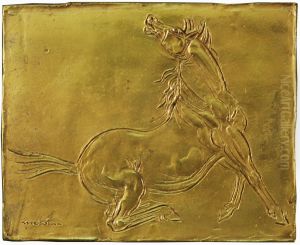Messina Paintings
Antonello da Messina, born Antonello di Giovanni di Antonio in 1430 in Messina, Sicily, was a pioneering Italian painter of the Early Renaissance. His work is noted for its remarkable fusion of Northern European painting techniques with the artistic traditions of Italy, making him a crucial figure in the spread of Renaissance ideals beyond the Alps. Antonello is particularly celebrated for his adept use of oil paint, a medium that he did not invent but significantly advanced, possibly influenced by his interactions with Flemish artists like Jan van Eyck. This technique allowed him to achieve extraordinary detail, depth, and realism, setting new standards for Italian art.
Antonello's career is marked by a synthesis of Gothic traditions and the emerging Renaissance emphasis on humanism and naturalism. His portraits are especially notable for their introspective depth and psychological realism, qualities that were groundbreaking at the time. One of his most famous works, the 'Annunciation with St. Jerome and St. Gregory' (1473), showcases his skill in using light and shadow to create spatial depth and his ability to render human emotion with subtlety and complexity.
Despite his significant influence, much about Antonello's life remains obscure, including the extent of his travels and his exact training. It is believed that he spent some time in mainland Italy, particularly in Naples, which was then under the rule of the Aragonese Court of Alfonso V. This period likely exposed him to Spanish and Flemish painting styles, further enriching his technique.
Antonello da Messina's impact on Italian painting was profound. He is credited with introducing oil painting to Venice, a city that would become renowned for this technique in the hands of masters like Bellini and Titian. Although he died in 1495, his legacy endured, influencing not only his contemporaries but also future generations of artists. His work represents a critical bridge between the Gothic and Renaissance periods, embodying the transition towards a more naturalistic and human-centered art.
